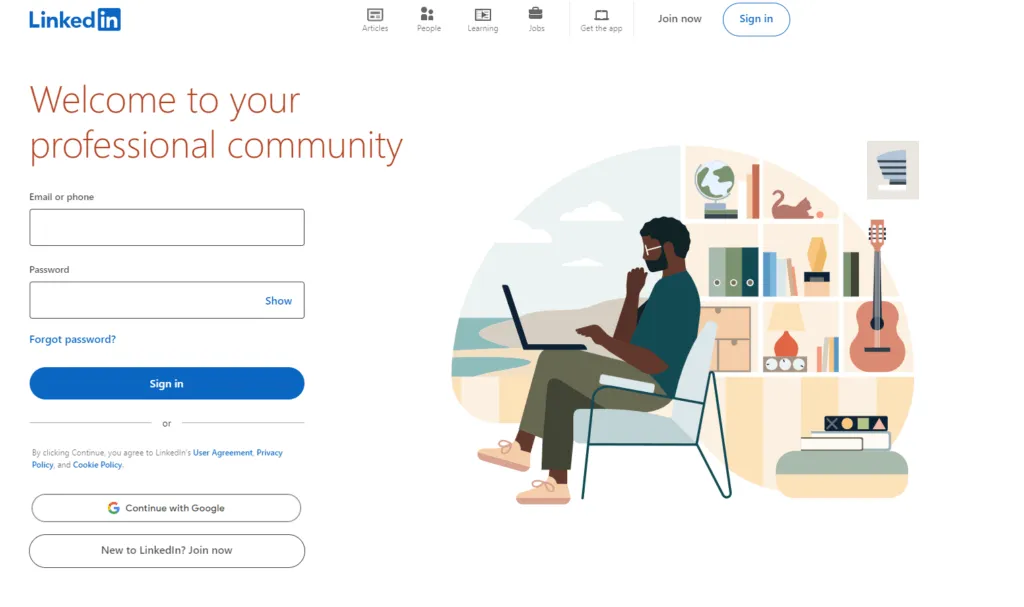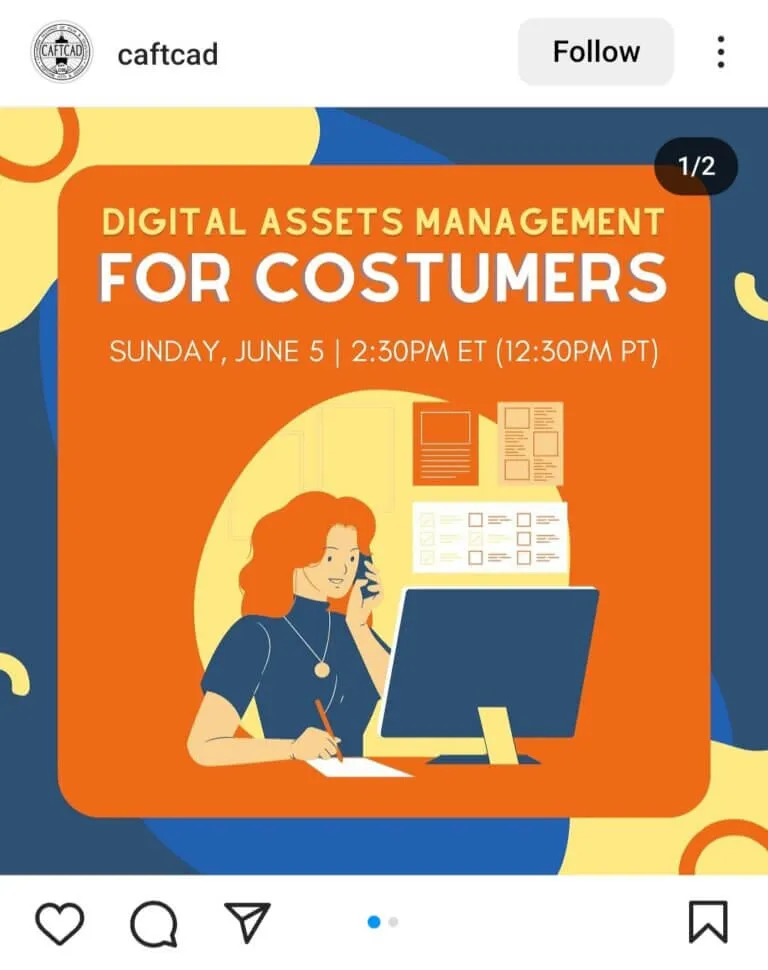Account-Based Marketing on LinkedIn: Pros and Alternatives
Denis Yurchuk
February 19, 2024

When you’re responsible for marketing your business, quality is typically better than quantity. Account-based marketing is about focusing your energy on a smaller group of potential customers who are most likely to buy. And the great thing is, you can apply this marketing strategy to all your marketing channels. In this article, we’re going to investigate using account-based marketing with LinkedIn. We’ll investigate the pros, the cons, and what you can do instead if account-based marketing isn’t quite the right fit for your business.
What is account-based marketing on LinkedIn?

Account-based marketing is when you prioritize selling your product or service to a small handful of high-value customers.
With ABM, you’re treating these customers like individual markets, creating a highly personalized marketing journey that appeals to them specifically.
While it’s not specific to LinkedIn, here’s a fantastic example of how a business used highly personalized account-based marketing to land a dream client. GumGum, an image recognition technology specialist, found out that T-Mobile’s CEO, John Legere, was a massive comic book fan. The company created a bespoke comic book showing how it could work with T-Mobile to help them win business, and delivered it to the relevant decision-makers, including John.
The move paid off. John loved the comic book, and GumGum won T-Mobile’s custom.

How account-based marketing with LinkedIn works
Here’s how the account-based marketing process might work on LinkedIn.
Let’s say that you’re selling a SaaS digital asset management platform that customers can use to manage the images and videos they use online.
You start by creating a customer profile and identifying ten high-value companies you’d like to target, as well as the key decision-makers at each company.
You then work to get the attention of the key-decision makers for each business, providing information and creating content that resonates with their specific needs. Ways you might do this on LinkedIn include:
- Connecting with employees and decision-makers, sharing content and news they may find interesting
- Creating content (like whitepapers, blog posts, even the comic above!) specifically targeting the pain points each company experiences. For example, if you’re targeting an eСommerce business that handles a lot of imagery, you can create content showcasing how easy a digital asset management platform makes it to update photos
- Taking part in relevant collaborative articles that appeal to the needs and wants of each company
- Sending personalized messages to decision-makers using InMail
- Running LinkedIn ad campaigns targeted at the relevant companies. One thing we love about LinkedIn is that you can run specific ABM campaigns targeted at people working at specific companies.
You may either have one salesperson dedicated to each specific business or use a team-based approach where your salespeople work together to manage all the accounts. It ultimately depends on the size and structure of your sales and marketing team, the type of businesses you want to target, and the length of your sales cycle.
When you get a client to sign up with your business, you choose another high-value customer and repeat the process!
Account-based marketing works best when it’s combined with other marketing channels. For example, as well as account-based marketing on LinkedIn, you might:
- Send the decision maker direct mail or merchandise
- Reach out to them on other social media platforms they frequently use
- Create personalized retargeting ads (for example, on the Google Display Network)
- Build high-quality landing pages on your website
Attend the same industry events as them.
The benefits of LinkedIn account-based marketing
The key benefit of using LinkedIn for your account-based marketing is that it’s designed for business interactions. While some companies may frown at staff spending all day on Facebook, X, or TikTok, using LinkedIn is perfectly acceptable during office hours!
LinkedIn boasts that over 65 million business decision-makers use the platform, with 80% of all members driving business decisions.

Let’s take a look at some of the other advantages of LinkedIn account-based marketing:
- It drives a high return on investment (ROI). As you’re targeting high-value customers with highly personalized marketing, you’re more likely to see a strong ROI. About 85% of marketers say ABM delivers higher ROI than other marketing efforts
- It leads to better relationships. With account-based marketing, you’re dedicating a lot of time to a specific client. This means a closer working relationship, which can lead to higher customer lifetime value and more loyalty
- It results in shorter sales cycles. As you’re choosing customers to work with, you’re essentially pre-qualifying them before you start selling to them. This can mean you close deals more quickly and, as a result, move on to the next prospective client
- It helps your sales and marketing teams work more closely together. With account-based marketing, it’s vital that sales and marketing work closely together. This can lead to lots of fantastic additional benefits for your business, including increased revenue and improved brand awareness.
The drawbacks of LinkedIn account-based marketing
Account-based marketing on LinkedIn has lots of advantages, but it’s not 100% perfect as a marketing tool. Here are some disadvantages to bear in mind:
- There’s a lot of work involved. Account-based marketing requires significant upfront investment. You need to research your market, identify the right customers, and plan your content accordingly. If you sell a low-cost item or one with a short sales cycle, ABM may not be the right approach
- Success is dependent on the accounts you choose. With account-based marketing, selecting the perfect prospective clients to target is critical. As you’re spending so much time and resources working with one specific customer, a mismatch can be a massive setback
- You risk alienating other potential customers. Account-based marketing means significantly narrowing your focus. As a result, you may find yourself ignoring potential customers who might have an interest in your product or service
- It can be expensive. As you’re creating marketing materials for a small group of people, this can increase your marketing spend. If you’re competing with other companies for a client’s attention, this can drive your costs up too – for example, if you’re using LinkedIn Ads. However, while there is big risk with ABM, there is also big reward!
The alternatives to account-based marketing on LinkedIn
If account-based marketing on LinkedIn isn’t an option for your business, what else can you do?
Here are three alternatives to account-based marketing that you might want to consider:
1. Broad-based marketing
Broad-based marketing is the opposite of account-based marketing. Rather than marketing your product or service to a handful of companies, you’re targeting a wider audience.
Let’s go back to our digital asset management platform. With broad-based marketing, you may be more flexible in the industries and job titles you target.
While this is more cost-effective, it may lead to longer lead times and a less personalized approach.
2. Segment-based marketing
With segment-based marketing, you’re focusing on a specific demographic rather than a specific business.
So, with a digital asset marketing platform, instead of targeting high-value companies, you may opt to target marketing managers who are responsible for large international websites.
With segmented marketing, you’re still delivering targeted content. However, you’re not building up those strong relationships in the same way you would be with account-based marketing.
3. Account-based marketing on another platform
Alternatively, you may want to carry out account-based marketing on another platform.
It’s important to focus your time and efforts where your customers are. For example, if they spend more time on Instagram rather than LinkedIn, it’s best to build a relationship there.

In our experience though, account-based marketing works best when you’re focusing on multiple platforms. This is because you can capture prospective customers’ interest wherever they are.
Is ABM on LinkedIn the right choice for your business?
Account-based marketing isn’t the right option for everyone. It’s highly resource-intensive and as a result, not suitable for all sales and marketing teams.
However, for the businesses it’s well suited to, it can lead to a bigger return on investment, better customer relationships, and improved customer loyalty. According to Demand Metric, companies that use ABM for at least one year see at least a 10% increase in revenue, with many seeing significantly more.
If you’re keen to give account-based marketing on LinkedIn a try, we can ensure your marketing materials are ready and raring to go.
Our team of experts will:
- Set up, manage, and optimize your LinkedIn ads
- Use conversion rate optimization to identify what marketing your customers love
- Delve deep into your business insights to maximize the efficiency of your marketing strategy
- Recommend other marketing channels you can use to optimize your LinkedIn marketing, like paid search
Let’s get started transforming the way you do business – contact us today!










.png)

